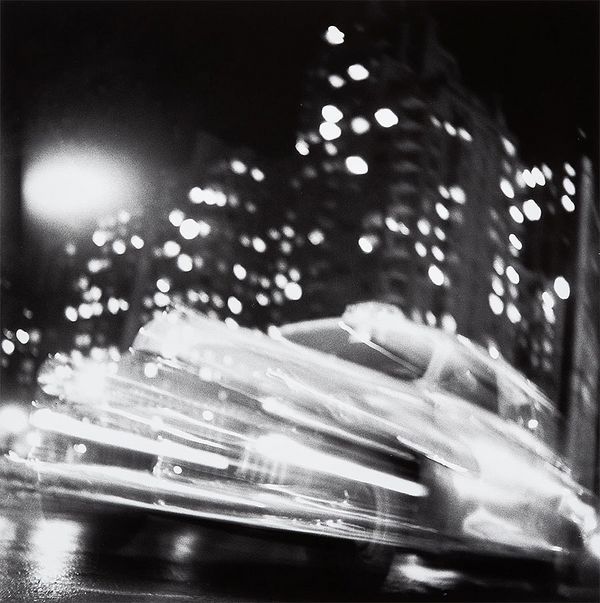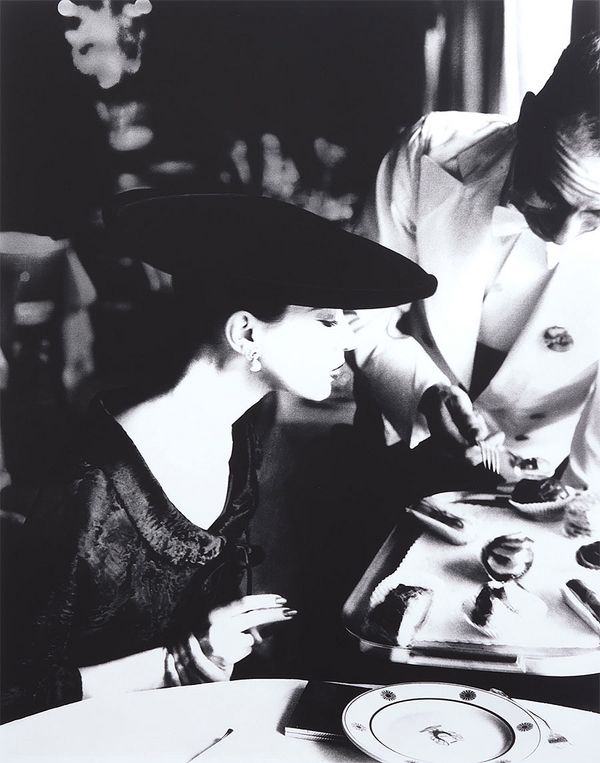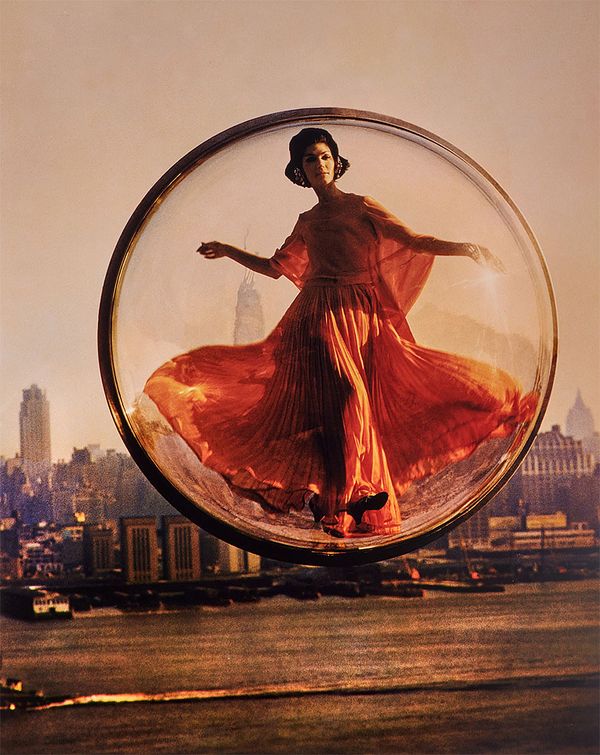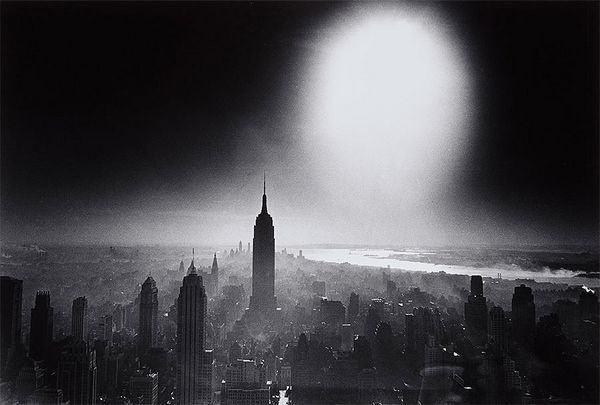William Klein, Atom Bomb Sky, New York, 1955. New York State of Mind: Photographs Online Auction.
Despite the efforts of thousands of photographers over 180-plus years of the medium’s history, the definitive New York City photograph does not yet exist. The city will not sit still for its portrait. To understand the city photographically one instead must look to the work done by those who documented their own piece of it, captured the streets and people before their lens, or used the city as the setting for dramas of their own creation. New York State of Mind, curated by gallerist Peter Fetterman, sets forth a gathering of these images, each the result of its photographer’s personal and jubilantly subjective take on the city: from the Gilded Age metropolis of Alfred Stieglitz’s photogravures to the smokey nightclub where Ella Fitzgerald performed for Duke Ellington and Benny Goodman, to the impossibly crowded beach at Coney Island, to the luxe interior of the Essex House, and beyond.

Weegee, Coney Island, 1940. New York State of Mind: Photographs Online Auction.
No photographer is more closely associated with New York City than Weegee, who had an unmatched ability to capture moments of humanity and warmth on the mean streets of the city. While Weegee’s studies of the city after dark made him indispensable to the newspapers, he is best remembered for his sunlit photograph of a joyous crowd on the beach at Coney Island on a summer day in 1940. The photograph is remarkable not only for the sheer number of subjects, but also for the fact that all eyes appear to be on Weegee.

Ted Croner, Taxi, New York Night, 1947-1948. New York State of Mind: Photographs Online Auction.
With the advent of faster film and the increasing brightness of streetlights, neon signs, and headlights, the city at night proved irresistible subject matter for photographers in the 1940s and 1950s. Ted Croner’s work captures the propulsive energy of the nocturnal city. Using a slow shutter speed and available light, Croner’s photographs exaggerate rather than arrest motion. In works by Henri Cartier-Bresson, Eve Arnold, and Sabine Weiss, brightly lighted theater marquees cast a luminous glow on the nighttime streets below.

William Klein, Dolores wants a taxi (Vogue) 1958. New York State of Mind: Photographs Online Auction.
William Klein offered his own homage to New York with his 1956 book Life is Good & Good for You in New York, which captured the frenetic pace of the city. New York State of Mind combines his epic cityscape illuminated by the atomic sun with the energized elegance of his fashion studies, two in color, which all use the city as backdrop. Klein’s work encompasses the grit and glamour of the city as no others have, before or since.

Lillian Bassman, The Little Furs, Barbara Mullen, Russian broadtail jacket by Trigère and hat by Lilly Daché, Essex House, New York, 1955. New York State of Mind: Photographs Online Auction.
As the New World home of the fashion industry, New York is the inevitable backdrop for the work of the great photographers of couture. Lillian Bassman homed in on the city’s most deluxe locales for her distinctive work. In Barbara Mullen, Essex House, Bassman creates a dream of urban sophistication. In Over New York, Melvin Sokolsky has encased his model in a bubble where she floats fashionably, just another feature of the city’s ever-changing skyline.

Melvin Sokolsky, Over New York, 1963. New York State of Mind: Photographs Online Auction.
Discover More from New York State of Mind >
Recommended Reading
